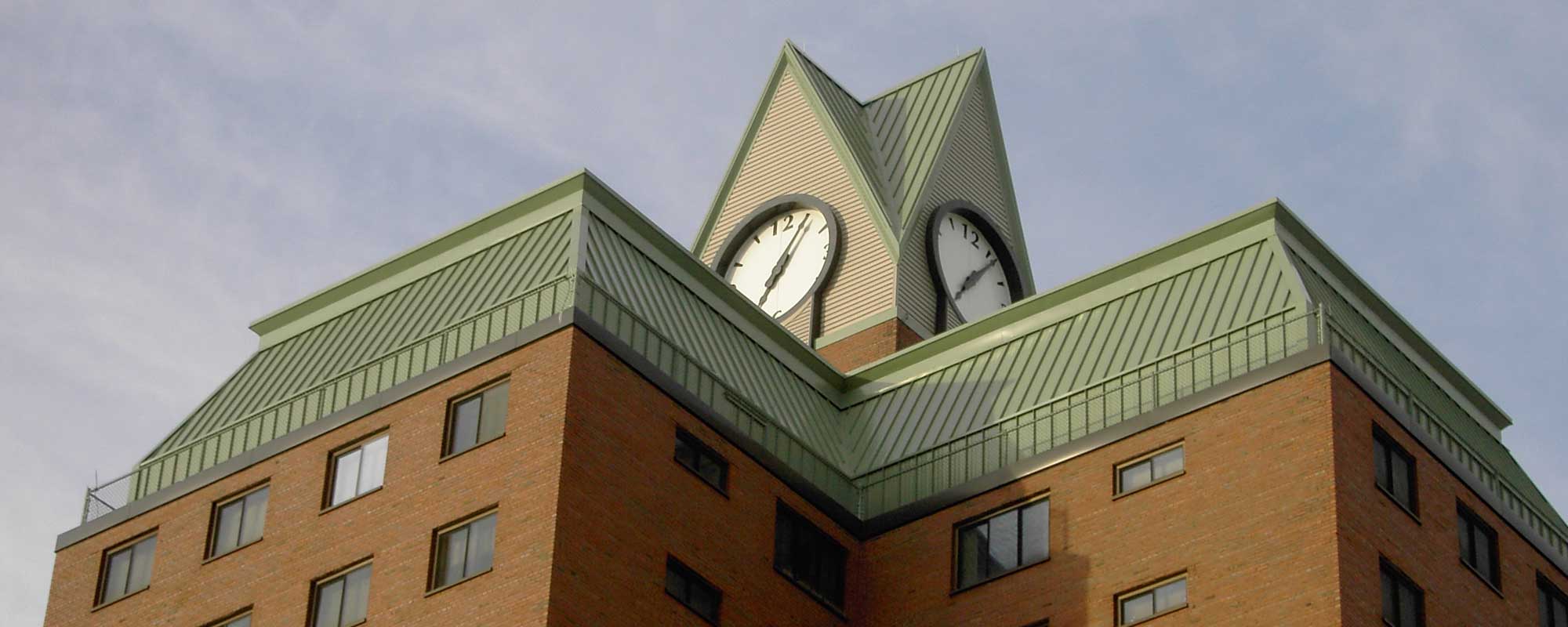Ventilation
Ventilation is an important consideration when designing a roof system- whether or not it is metal or any other system choice. Metal roofing is capable of out performing many roofing systems in many types of situations, but if the roof system is not properly designed – even with metal roofing – you could have moisture problems.
A substantial portion of reported leak problems end up having nothing to do with the roof system leaking. Of these types of calls, many end up being related to lack of proper ventilation. If not designed into the original system before installation it can be very difficult to correct the problem after the roof is in place.
In a basic nutshell, if the roof has an attic space underneath the roof deck moisture from the warm interior of the building will tend to migrate into the attic. If there is no ventilation ( air movement ) in the attic space that lets this moisture escape from the building, it will accumulate. During cold seasons this moisture can freeze on the underside of the roof deck or in the roof insulation. When the sun hits the roof or the temperatures get warmer, then the condensation melts and drips off of the deck onto the attic insulation or directly onto the ceiling . The building owner then sees his ceiling getting wet all over and immediately calls the roofing contractor claiming roof leak. There have been many instances of calls about roof leaks when it hasn’t rained or snowed in weeks.
When these “leaks” are investigated you may find wide spread dry rot of the plywood deck and other wood components or rusting of steel components. Replacement of these components can only be accomplished by removing the roof and the deck… even if the roof is in perfect condition.
Whether or not it is new construction or a reroof, it is important to analyze whether there is an effective ventilation of the attic space. ( There can be moisture problems with non- attic construction where the metal roof is installed over roof insulation and a structural deck or, if the panels are structural, just roof insulation… but that is another Tech Topic discussion on vapor retarders and dew point. ). If it is a reroof, make sure that the owner doesn’t want the roof replaced because of “roof leaks” that are actually a condensation issue. If you reroof without correcting the root cause, you still have a problem.
What are the basics of a vented roof system? There are a few basics to look for. They are:
1. The air in the attic space must be “changed” or exhausted to the exterior. The rate of this exchange must be adequate to prevent moisture buildup. ( Just as air flow will dry clothes from the laundry ) In addition, in cold climates this air exchange is important in keeping the attic cool, which keeps the roof from heating up. This will cause snow to melt and refreeze, generally at the lower eave of the roof. Ice dams at eaves, valleys, and units, can create ponding water behind the ice. If you submerge roofs and flashings you greatly increase the possibility of a leak. Proper ventilation will mitigate this condition.
2. Building codes generally require the roof venting ratio to be no more than 1/150. This means that at a minimum you would need 1 square inch of venting for every 150 square inches of temperature conditioned area under the attic. ( A simple rule of thumb is 1 square inch per square foot of area, as a square foot contains 144 square inches. )
3. A passive venting system ( no power vents ) functions due to the fact that hot air rises- escaping out of vents located at the high points of the roof. This will draw in fresh cool air from the vents that have be located at the low points of the roof. You need a balanced venting system, with ½ of the venting area being allocated to air intake and ½ to air exhaust. If the percentages are not balanced the lesser percentage will limit the effectiveness of the larger. ( It is not uncommon for a properly designed ventilation system to not function properly because attic insulation has been installed all the way to the outside edge, covering the intake soffit vents. Make sure that all vents are unobstructed. )
4. Make sure that the system is designed so that all areas of the attic space get proper air flow. Often the building shape and roof configuration, or other design conditions, will result in dead air space in some areas and high flow in others. Moisture can still accumulate in the dead air locations, resulting in water issues in those locations. Sometimes power assisted venting is required to move air in all locations.

